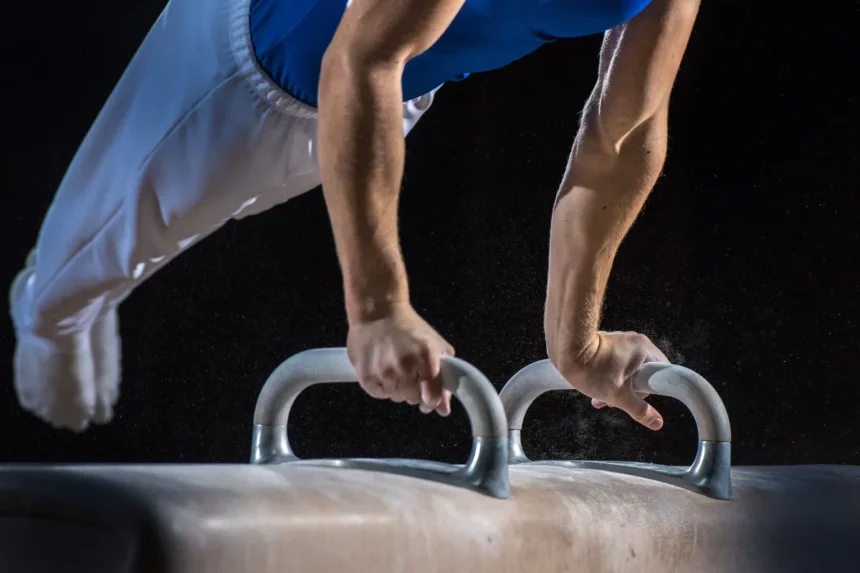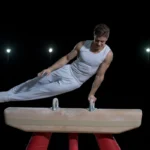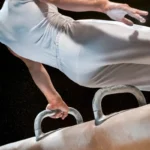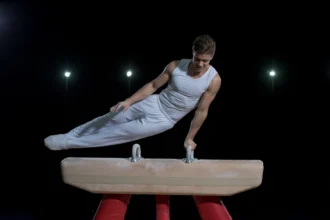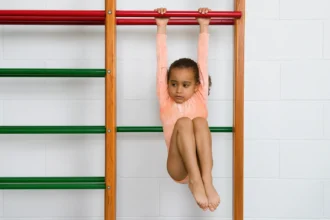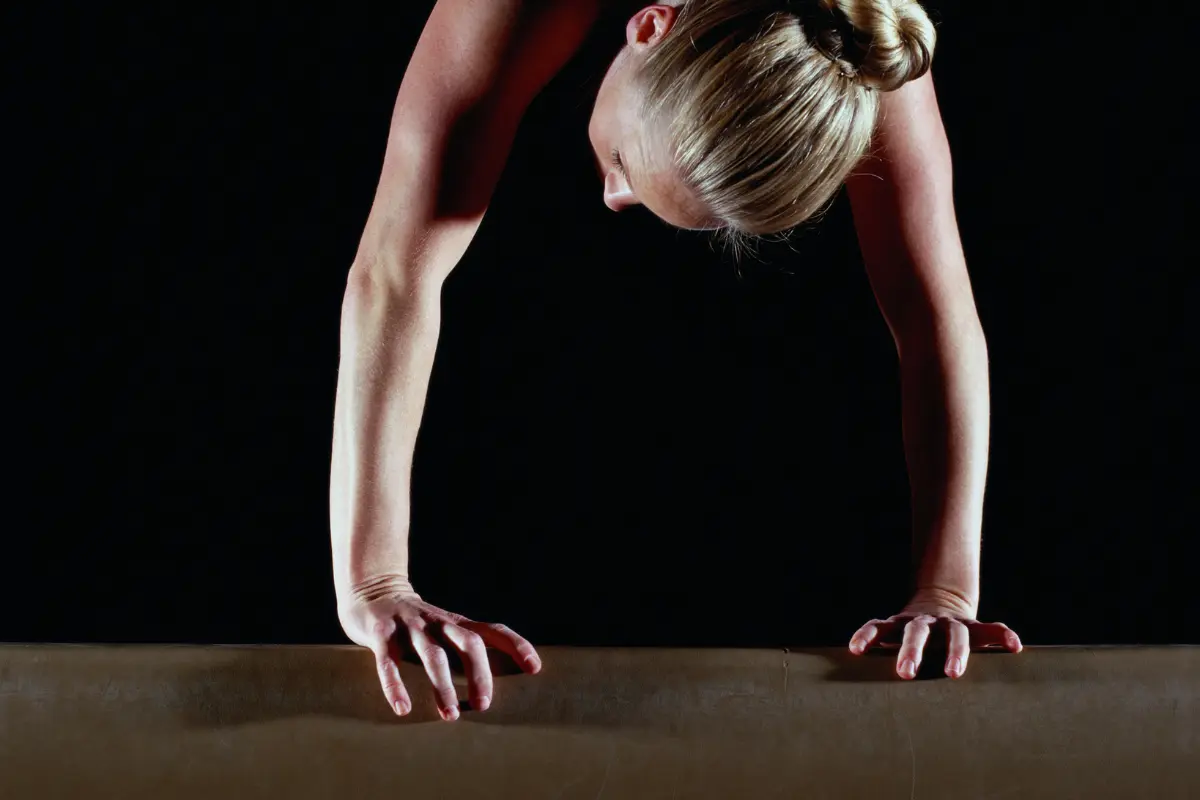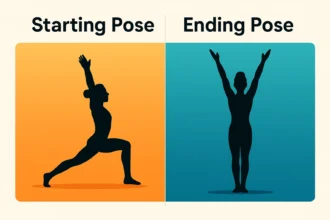On the pommel horse, few elements capture the essence of control, rhythm, and artistry as clearly as the travels. While circles provide the foundation of the event, it’s the ability to move across the apparatus with precision that separates an average routine from a world-class one.
Travels, most notably the Magyar and Sivado, demand flawless body control, hand placement, and rhythm while keeping the swing fluid.
What Are Travels?
In simple terms, travels are circles performed while moving from one end of the pommel horse to the other. Instead of staying fixed between the handles, the gymnast gradually shifts sideways, using each circle to advance across the horse. The two classic forms are:
- Magyar Travel – forward travel performed in front support.
- Sivado Travel – backward travel performed in rear support.
Both skills are classified under Element Group III (Side & Cross Support Travels) in the FIG Code of Points, making them essential components of a balanced routine.
The Magyar Travel
Origins and Naming
The Magyar Travel is named after Hungarian pommel horse legend Zoltán Magyar, a two-time Olympic champion (1976, 1980) who redefined the event with his swing mastery. His innovation of moving forward along the horse in continuous circles transformed what was once a static event into a traveling performance. To this day, his name is attached to the forward travel, which remains one of the most recognizable and widely performed pommel horse elements.
Description
The Magyar is a forward-moving travel performed in front support. The gymnast begins between the handles and advances toward the far end of the horse, shifting the hands in rhythm with each circle while keeping the body extended and the legs tight together. By the end, the gymnast has covered three zones of the apparatus: handles → middle → far end.
Technical Breakdown
- Starting Position: Begin in front support with clean, tight circles between the handles.
- Hand Placement: Each circle advances one hand slightly forward, while the other hand drives the swing and maintains rhythm.
- Hip and Leg Position: Hips remain extended and high, legs glued together, toes pointed. A slight hollow body shape prevents piking.
- Shoulder Action: The shoulders lead the shift forward, preventing collapse or drift backward.
- Completion: A full Magyar should end with circles at the far end of the horse, either flowing into continued circles, a Sivado, or a new element.
Difficulty Value
- Magyar Travel = D element under the 2025–2028 Code of Points.
- Because Element Group III credit requires a D+ skill for the full 0.5 EG bonus, the Magyar is one of the most economical EG choices available.
The Sivado Travel
Origins and Naming
The Sivado Travel takes its name from Miklós Sivado, another Hungarian pommel horse innovator who, like Magyar, helped pioneer the traveling style of swing in the 1970s. If Magyar’s contribution was forward travel, Sivado’s was the equally challenging backward version, which requires the gymnast to maintain rear support while advancing across the horse.
Description
The Sivado is a backward-moving travel performed in rear support. Starting near the handles, the gymnast swings continuous circles while shifting the hands backward, moving steadily toward the near end of the horse. Like the Magyar, it must clearly cover three sections—handles → middle → end—to receive full credit.
Technical Breakdown
- Starting Position: Begin circles in rear support between the handles.
- Hand Placement: Each circle involves a coordinated hand shift backward, maintaining even rhythm with the swing.
- Hip and Chest Position: Shoulders stay open, chest slightly lifted to avoid collapsing into the horse.
- Leg Position: Legs remain tight together with pointed toes, hips extended for a clean line.
- Completion: The travel should end with circles at the near end of the horse, often flowing directly into the next skill or linking back into a Magyar for a forward-backward sequence.
Difficulty Value
- Sivado Travel = D element under the 2025–2028 Code of Points.
- Like the Magyar, it satisfies Element Group III with the maximum 0.5 EG credit.
- When performed in combination with the Magyar, the gymnast earns not only two D elements but also valuable connection bonus.
Why Travels Matter in Routines
Travels aren’t just nice to have—they’re structural necessities on pommel horse. Element Group III is specifically defined as travel-type elements, and under the FIG Code of Points, failing to include one means losing required composition credit. But the 2025–2028 Code adds a crucial twist:
- If your travel is D or higher, you receive the full 0.5 EG credit.
- If it’s C or lower, the EG credit drops to 0.3.
That small difference changes how routines are built. For most gymnasts, the Magyar and Sivado travels are the most efficient way to check the EG III box. Each is valued at D, and when paired together they deliver:
- Two D-level elements (building difficulty).
- Full EG III credit (0.5).
- Connection bonus for linking forward and backward travel.
Coverage and Rhythm
Travels also satisfy another judging priority: use of the entire horse. A travel should clearly advance from the handles → middle → far end. Judges downgrade or deny credit for “under-traveling.” Smooth travel sequences prove that the gymnast’s swing is strong and rhythmically controlled, not just stationary in one section.
Variety and Rule Caps
The Code also prevents overuse of certain travel families. For example:
- Traveling spindles are capped, with limits on repetition.
- Russian travels can’t simply be repeated across the horse for easy difficulty.
This means the Magyar–Sivado combination remains the gold standard: reliable, efficient, and fully within the rules.
In short, the Code rewards gymnasts who master travels with maximum efficiency and bonus, while punishing routines that skip or downgrade them.


